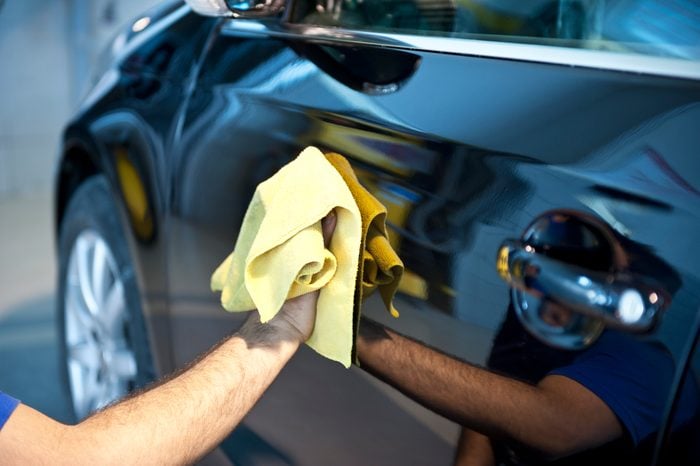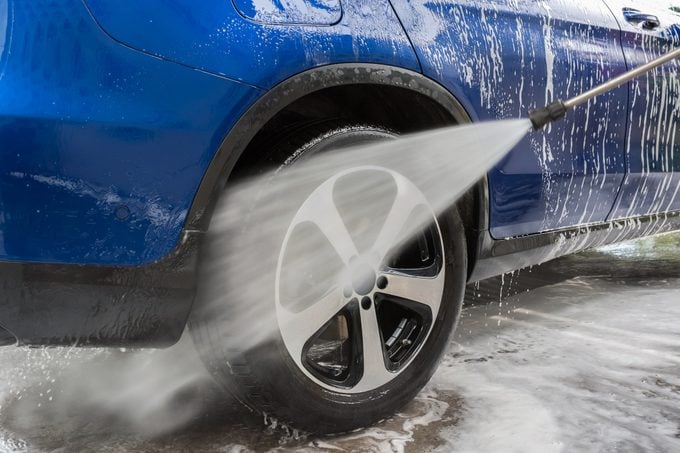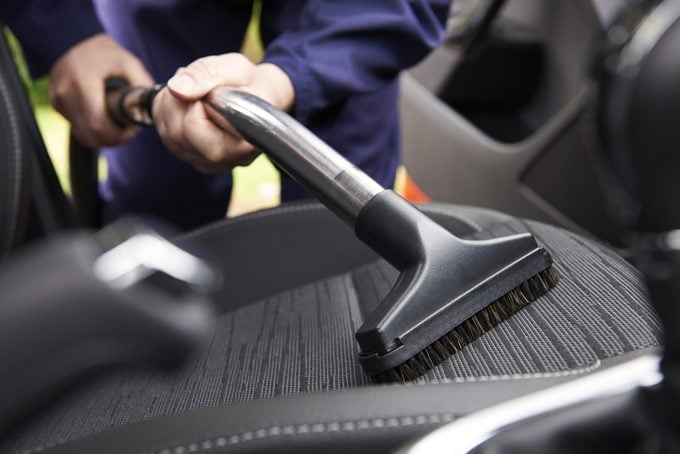A Guide To Spring Cleaning Your Car
Updated: Apr. 25, 2023

With spring comes sunshine and warmer weather, and a perfect opportunity to clean your vehicle.
Back when radio was still relevant, folks in my region of New York State heard a booming baritone voice kick off a commercial for a local car wash chain with this phrase: “Salt eats cars!” After all, in the Northeast we deal with snow, salt, sludge and sleet — substances can wreak havoc on a vehicle’s paint, wheels and interiors.
While it’s a good idea to keep a vehicle as clean as possible all winter long, spring brings the perfect opportunity to restore its shine. This guide to spring cleaning your car will outline some of the most important aspects of keeping any vehicle in tip-top shape.
On This Page
Use the Right Products
Cars aren’t cookie sheets, so don’t wash them with dish soap. Instead, use a high-quality liquid car wash that’s easy to mix in a bucket of water. This makes washing a car easier.
It’s OK to wash light-colored cars with soft-bristled brushes, since they don’t show scratches nearly as readily as dark-colored cars. However, a car wash mitt or sponge is a much better choice for avoiding swirl marks and fading clearcoat. A microfiber cloth is handy for drying before water spots appear.
Vehicle interiors often contain several types of materials. Plastic, fabric and leather may all exist in close proximity. There are all-purpose products for this reason, and they do a good job. However, be sure to use a leather conditioner on leather seats and parts.
Wash Off Salt First
The first thing anyone in snowy regions should think about is getting the salt or synthetic deicer off their cars. Whether they’re from a street or a driveway, these materials eat away at a car’s paint, body, frame, brake lines and other items — especially those underneath the vehicle.
That’s why you should take your vehicle to a full-service car wash and pay for the package that includes the undercarriage wash. Jets spray hot, soapy, high-pressure water up into the underside of the vehicle, blasting away any salt or deicer deposits. This is the fastest and most efficient way to keep that undercarriage clean and prevent rust.
DIY detailers can also take this a step further at home. Fill a spray bottle with a 50/50 water and vinegar mix and climb under your vehicle. Spray any areas with collected salt and grime buildups and wipe them down.
Start on the Exterior

It might seem tempting to start by cleaning the interior, since it’s always warm and cozy inside. But doing so will inevitably leave muddy shoe prints or drips on that beautifully-cleaned interior. Instead, start on the outside of the vehicle.
Rinse away contaminants
It’s absolutely critical to remove any dirt, salt and other potential contaminants from the paint surface before washing the car. Give the car a good rinsing with water from a hose or pressure washer. Be sure to rinse the body panels, the glass, the wheels and wheel wells. Hold off on the soap at first because it can hide mud and dirt underneath. Here, find out if you can wash your car without a hose.
Wash the exterior
After the rinse, give the car a good, soapy wash. Use the car wash mitt in circular motions to work soap over the entire vehicle, working panel-by-panel to ensure that you don’t miss anything, Once the vehicle is clean, rinse it again from the top down.
Pro tip: Use a different sponge or mitt for wheels and tires than the one for the vehicle body. Wheels are filthy and contain tons of small particles that can embed themselves in a mitt and etch clearcoat.
Dry it by hand
Don’t let the vehicle air dry. Even in the most idyllic conditions, that will lead to water spots and a dull paint finish, since the dust in the air will collect on even the slightest moisture. Instead, dry the body from the top down with a microfiber cloth. Again, use a different cloth for the wheels.
Don’t forget the wax and tire shine
The best way to make a car shine all spring and summer? Wax its surface. Carnauba wax applied to the clearcoat will leave a beautiful shine in sunlight while protecting the vehicle from rain and other contaminants.
Work in small sections at a time, like a fender or trunk lid. Apply the wax in circular motions. Allow it to come to a haze, then buff it off with a clean microfiber cloth. Also, make sure to wipe the tire sidewalls or spray them with a tire shine to really boost the car’s look.
Move To the Interior

Once the exterior is clean and shiny, it’s time to clean the interior.
First, remove everything from the car, including items in the cabin, glove boxes and trunk. This not only gets everything out of the way, but lets you take inventory of what’s necessary to carry and what isn’t. Consider putting necessary items in a trunk organizer, keeping them safe, secure and orderly.
Wipe the dashboard and door panels
Start by wiping down the dashboard, instrument panel, center console and door panels with an all-purpose cleaner and a microfiber cloth. These collect a lot of dust, so it’s best to wipe them and disturb that dust before vacuuming.
Brush and vacuum together
With the loose dust out of the way, it’s time to vacuum the rest of the interior. Use a soft, fine-bristled brush to remove any dust from the vents, seat cushions, door pockets and similar spaces, vacuuming the particles in the process.
Grab a stiffer brush to loosen the dirt and grime packed into the carpets and mats before vacuuming these surfaces. Make sure to vacuum the cupholders and headliner, as well.
Condition the leather
Wipe down the leather seats, steering wheel and shifter boot with a leather conditioner and microfiber cloth. This cleans the leather and helps prevent it from drying out and cracking. Applying a cleaner not meant for leather can dry it out faster.
Use a glass cleaner for vehicles
Before applying the cleaner, wipe down the interior windows with a microfiber cloth. Starting at the top, wipe downward before repeating.
Standard glass cleaners contain ammonia, which can leave streaks or affect window tints. Instead, pair a glass cleaner formulated for vehicles with a microfiber cloth for the best results. Spray a few squirts onto the cloth and wipe the window, starting at the top and working downward in small, circular motions. Then wipe the glass dry with a different clean microfiber cloth.
Maintenance Reminders
Here are a few additional items to check and possibly replace while spring cleaning a car:
- If the car is due for an oil change, now’s the time.
- Check the wiper blades to ensure they’re in good condition to handle heavy spring rains.
- Check the cabin filter and replace it if it’s clogged or excessively dirty.
- Rotate the tires so they wear evenly.
